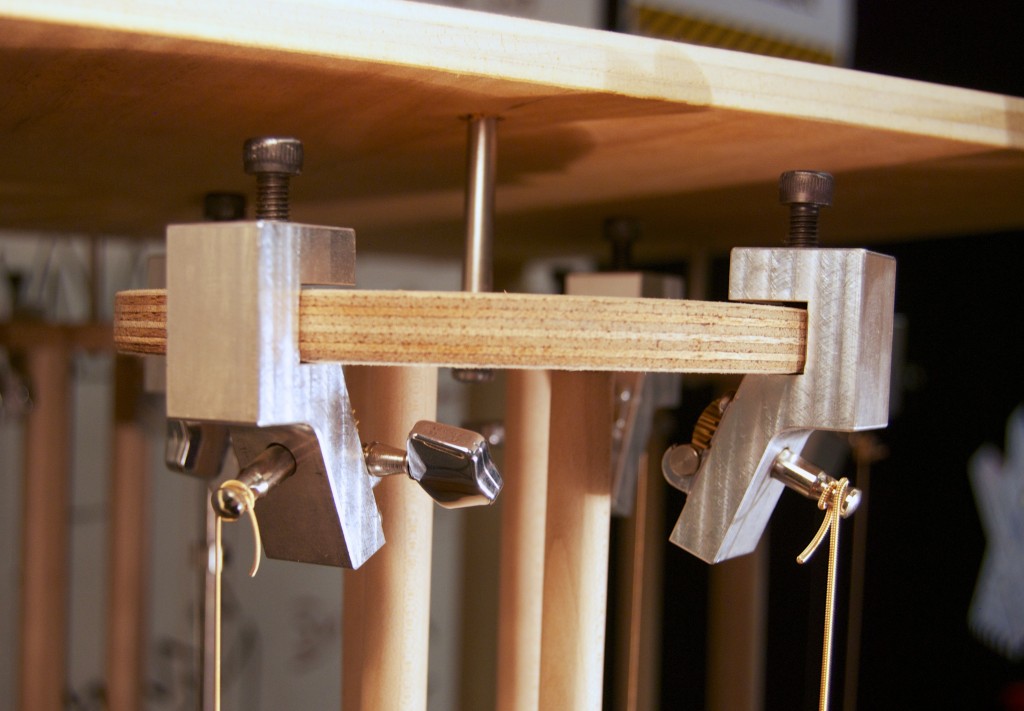This research is set against a theoretical/philosophical background regarding the nature of human-instrument relationships, from which I defined a conceptual space to explore through design, and then engage in reflective accounting of putting the design into practice. The first prototype, created at SARC, was extremely robust, but heavy, difficult to regulate, and a bit scary!
The final version was created at Michigan, working with MA student Simon Alexander-Adams.


Rotation sensing 
CNC string tuners 
Rotor Lock Mechanism 
3D printed plectrum holders
Innovative performance techniques emerged in response to the system, bringing aesthetic priorities and biases with them, as well as whatever implements at hand. A feature of not having a priori musical goal.
- Muting
- Tuning with “slides”
- Manual plucking
Emergent behaviors and musical surprises
- A consequence of distributed control
- Tendency to “go with” surprises
- Improvisatory character
Different Modes at High Speeds
- Primary interaction is tuning/timbre
- Sense that “the system is in control,” akin to an ornamental mode
Reflections
- Facilitated collaborative improvisation
- Performances are episodic: Stable state -> transition -> stable state
- Temporal nature / speed of automated behavior enforced different modes of interaction
